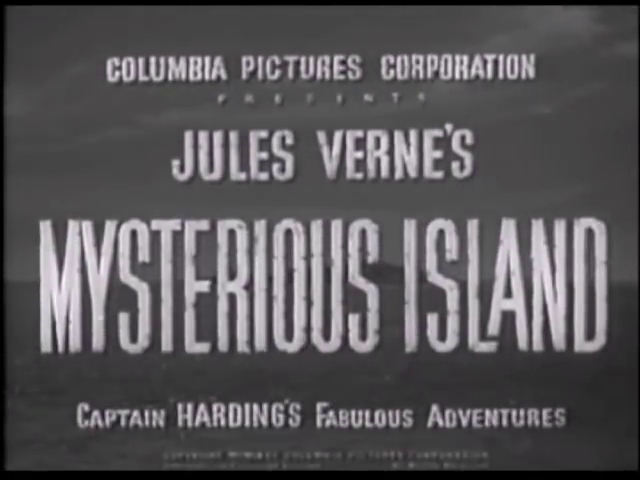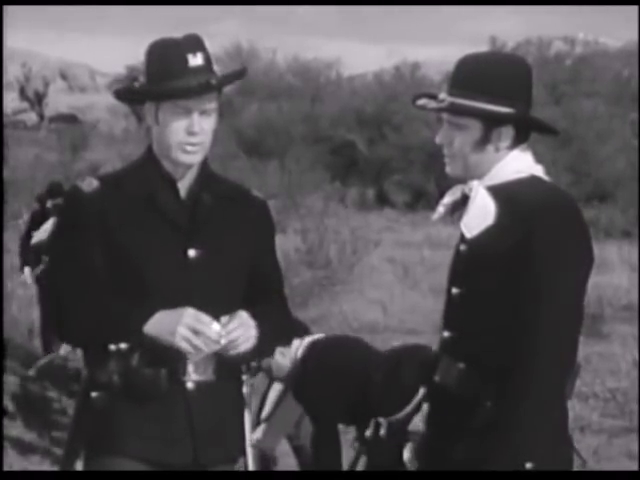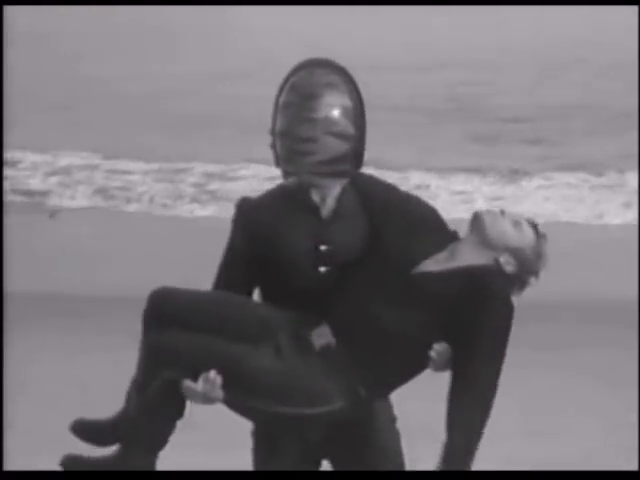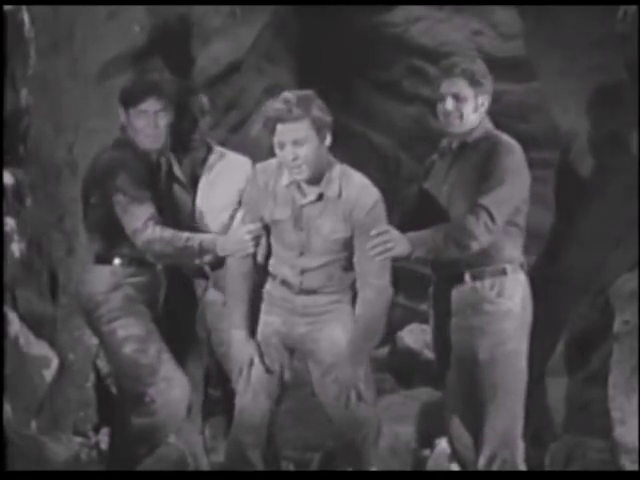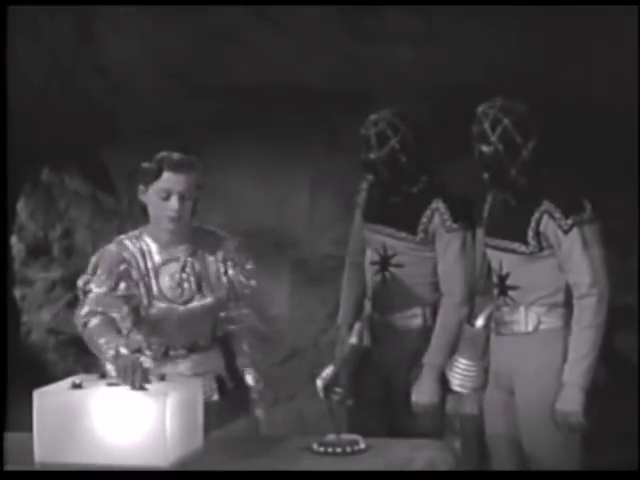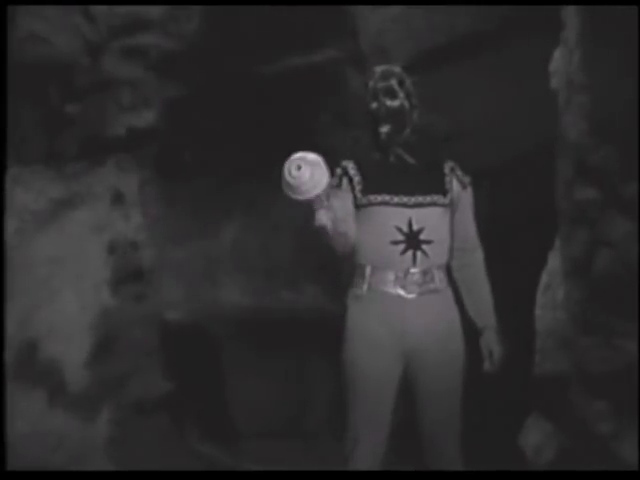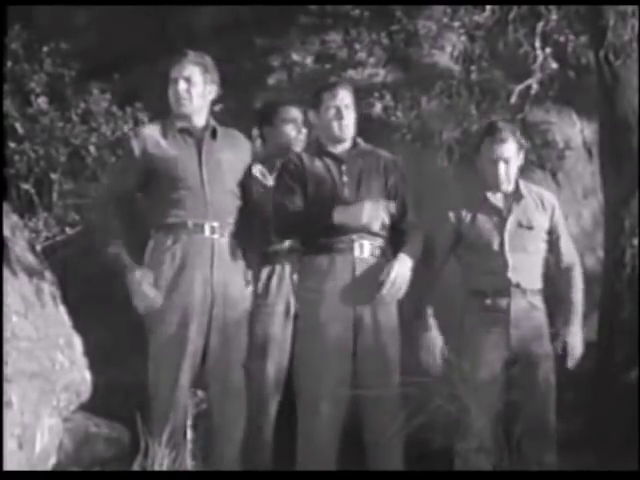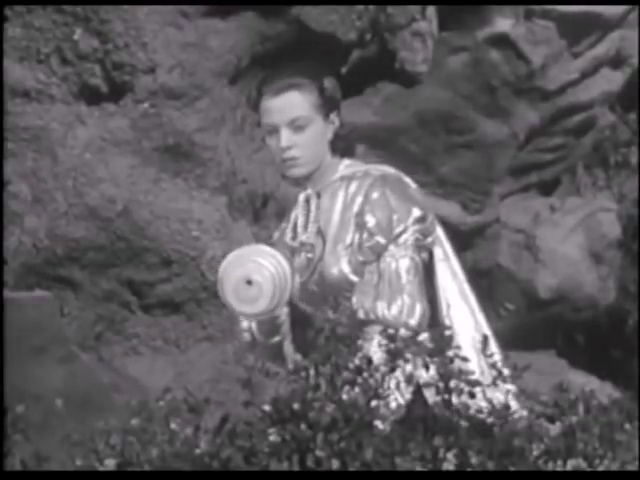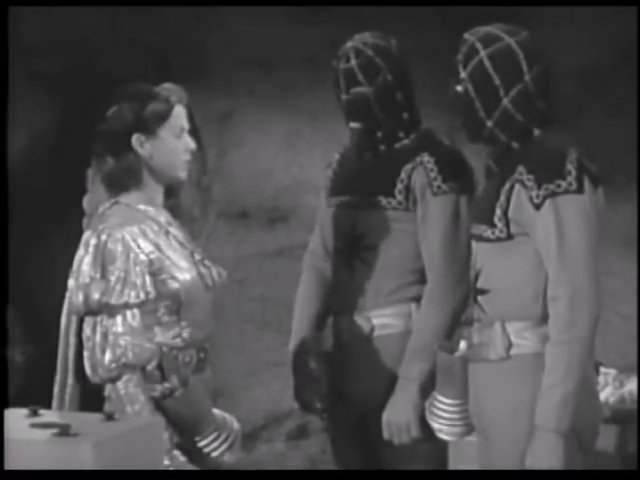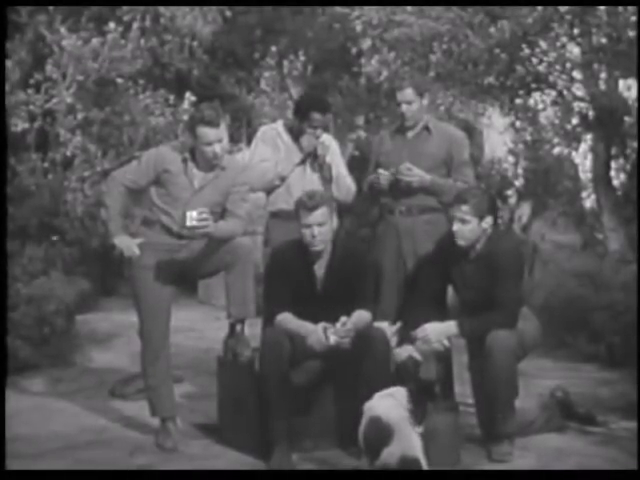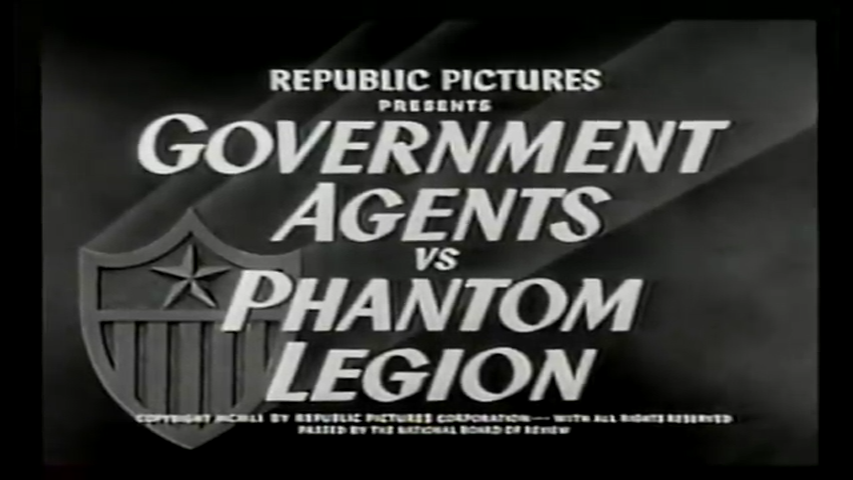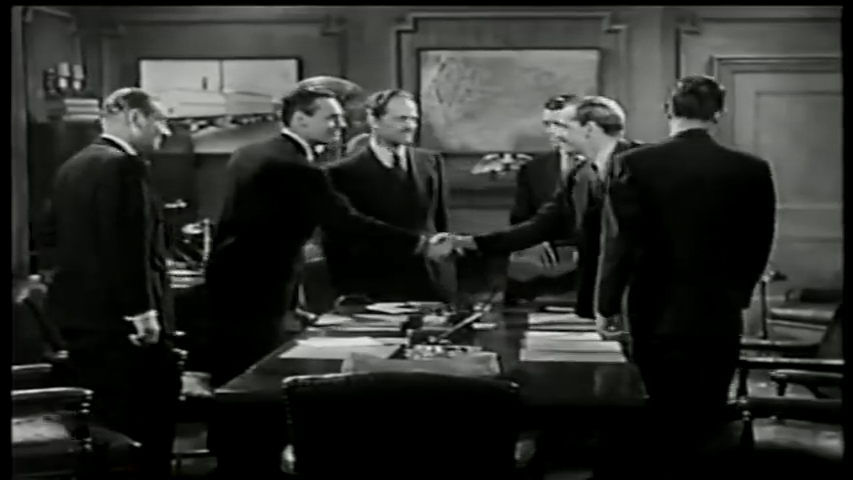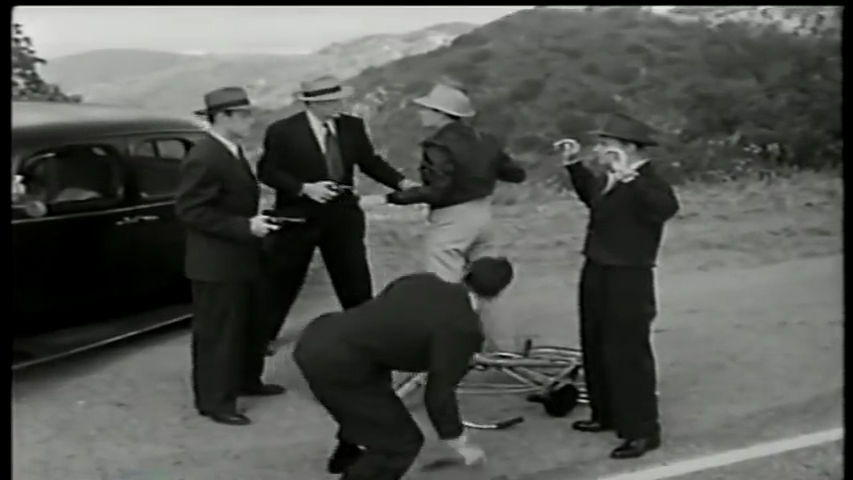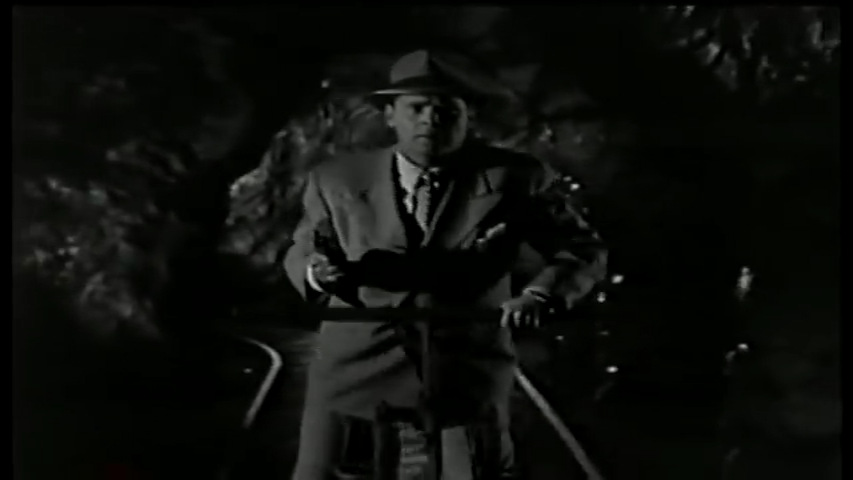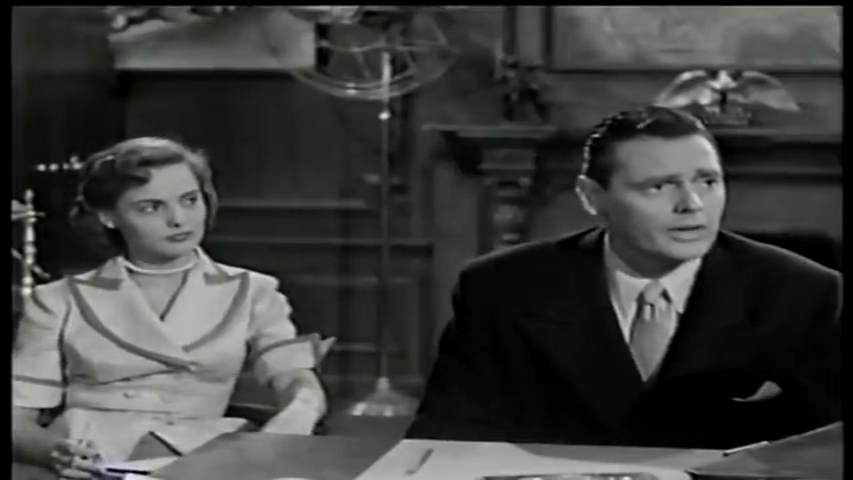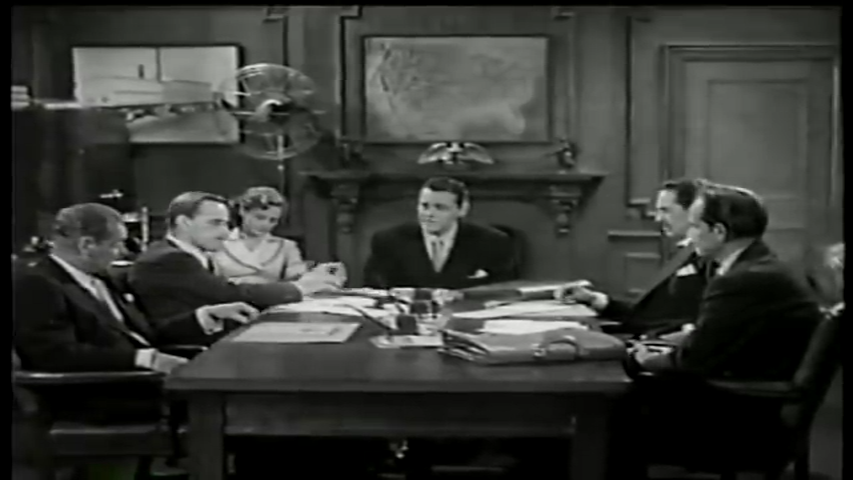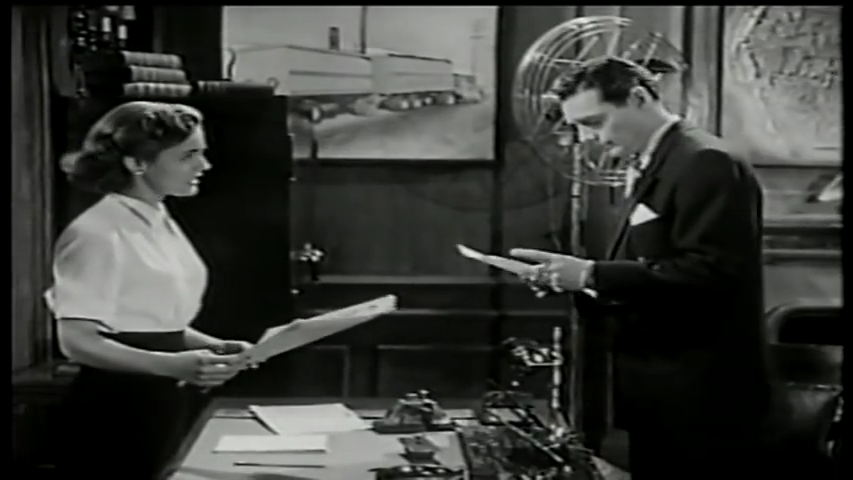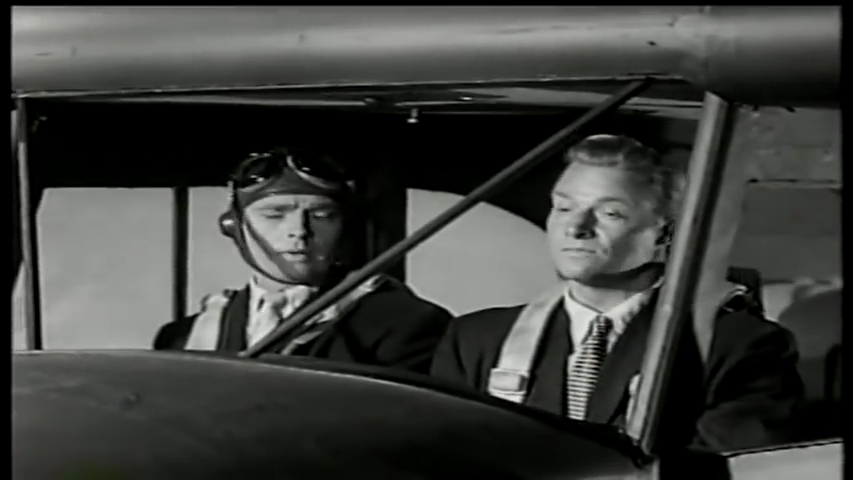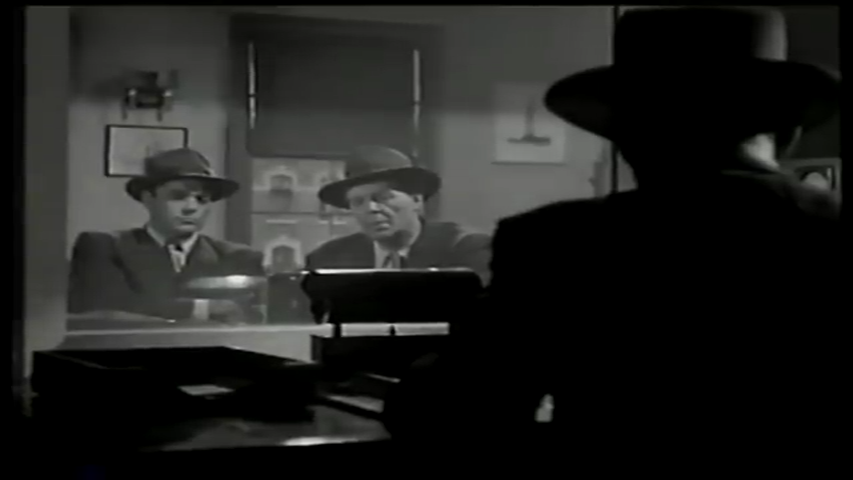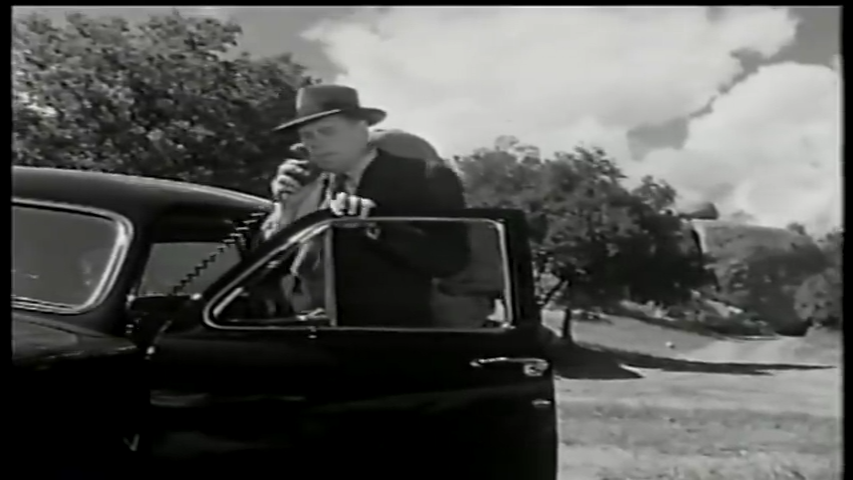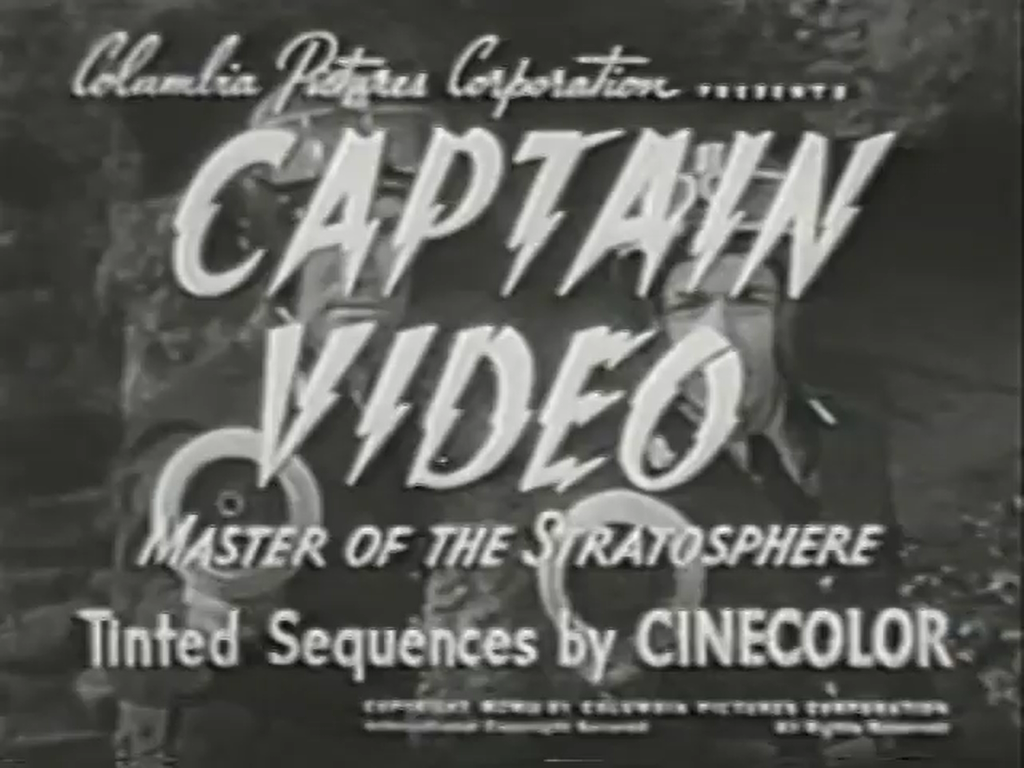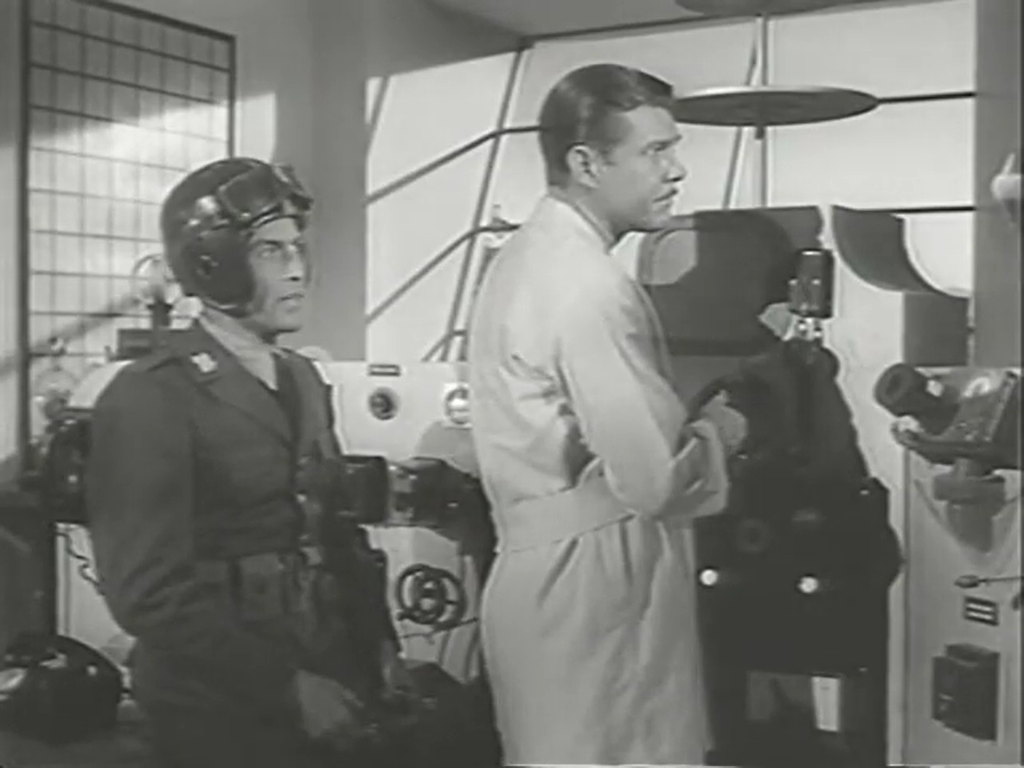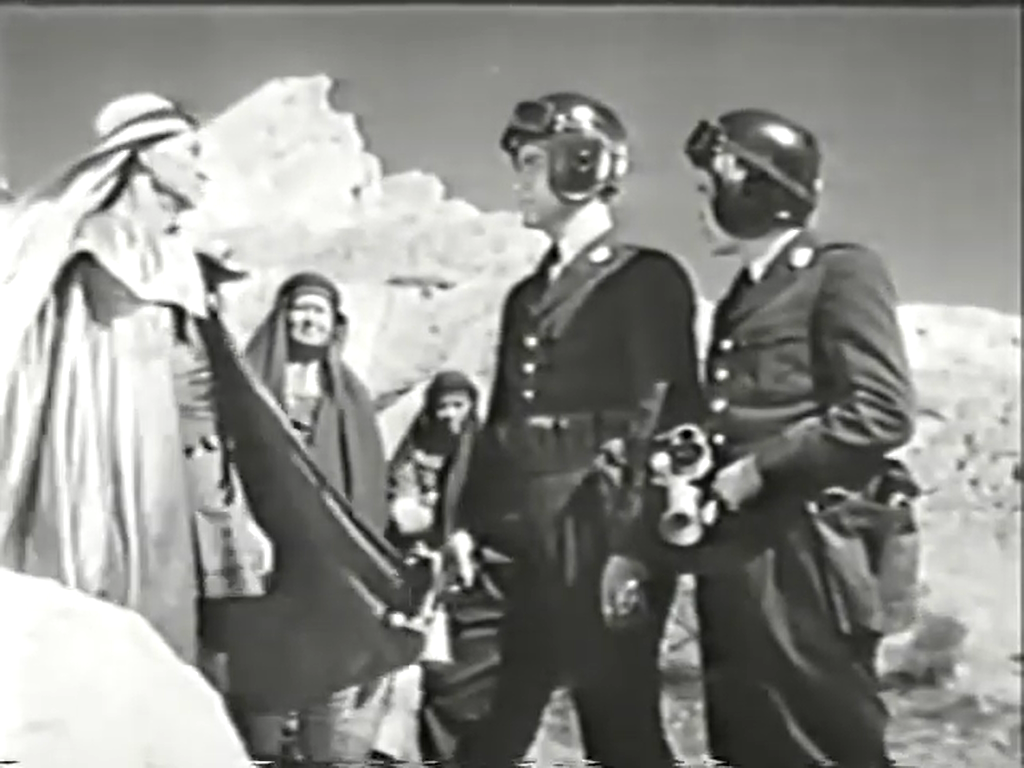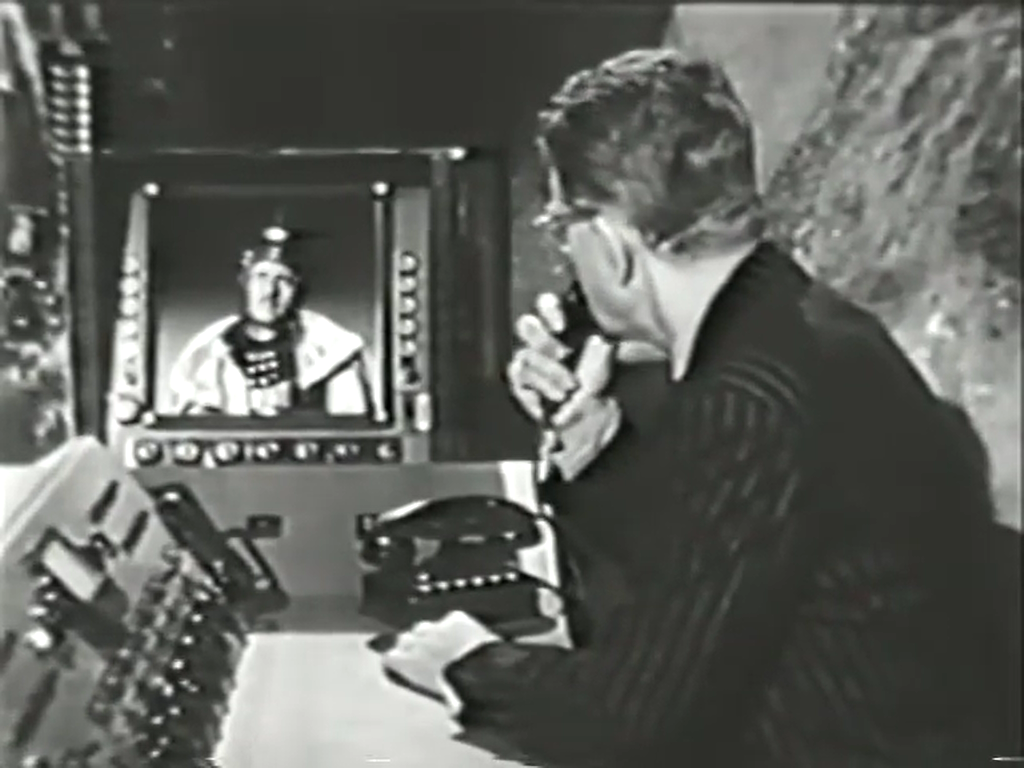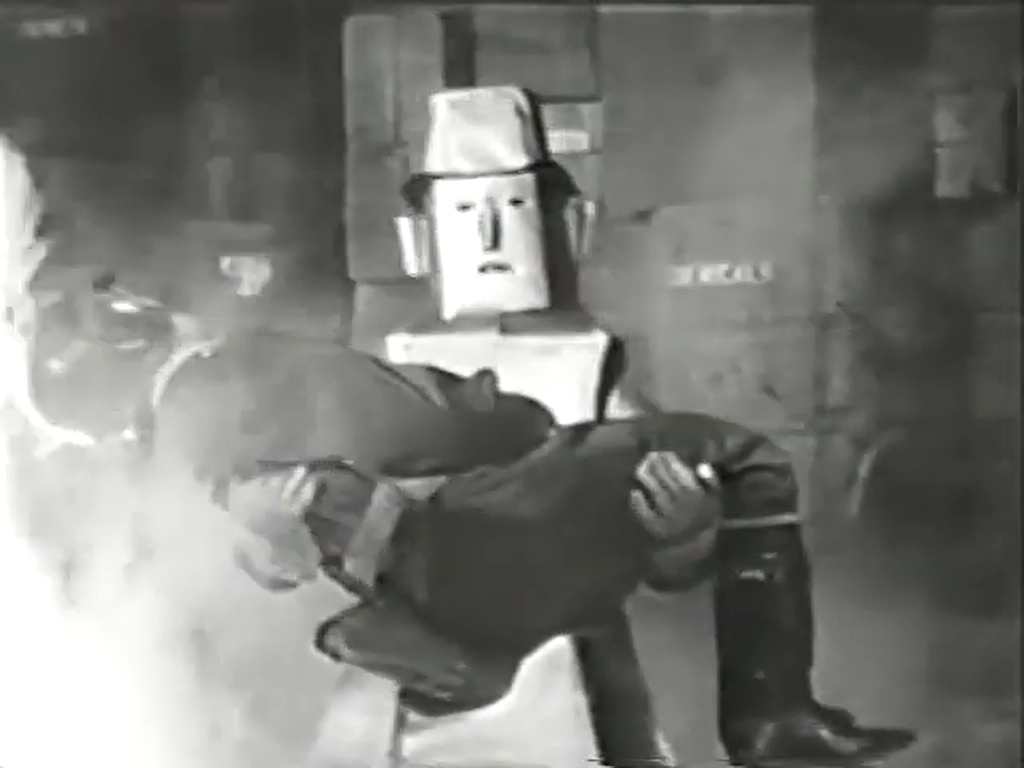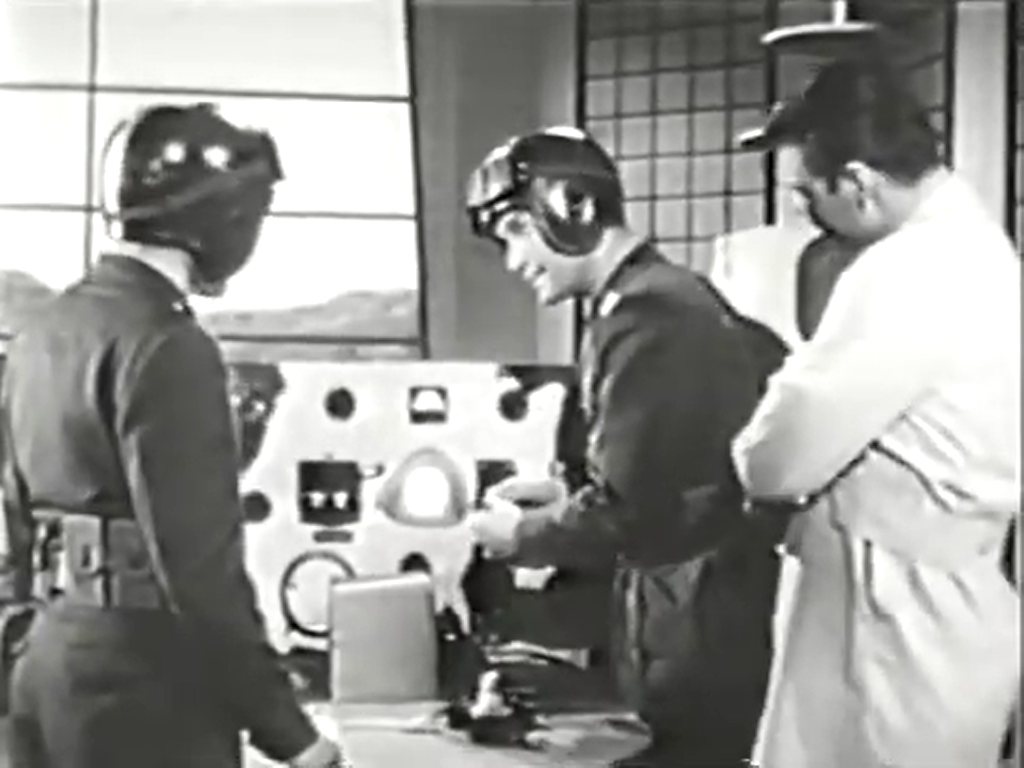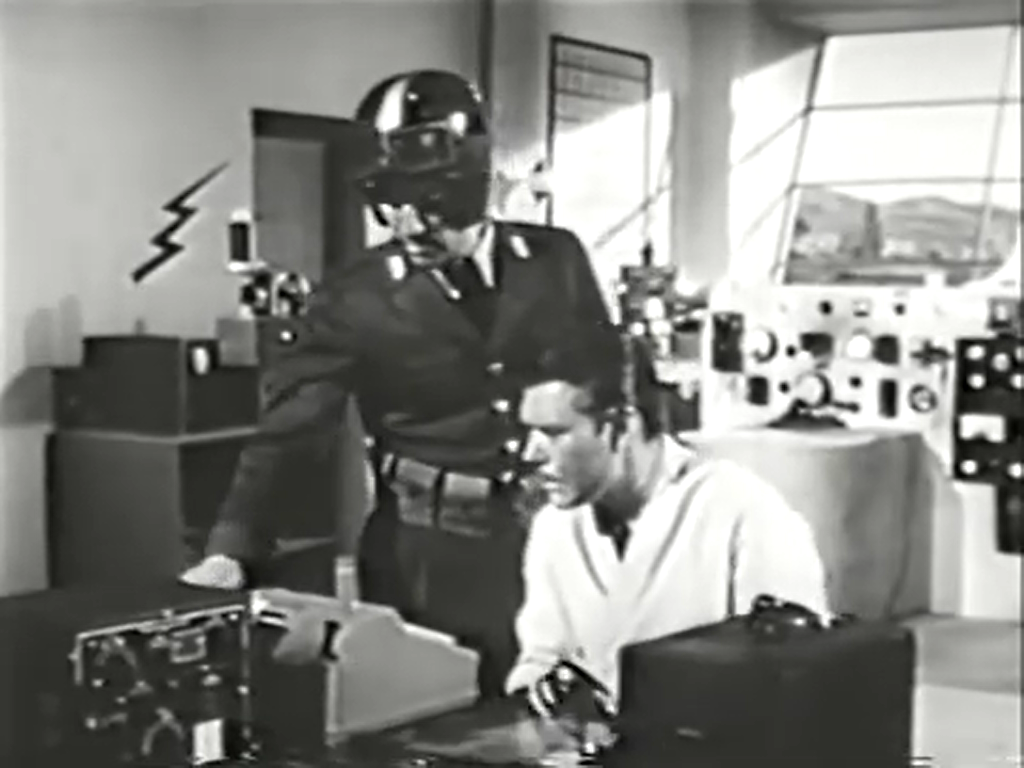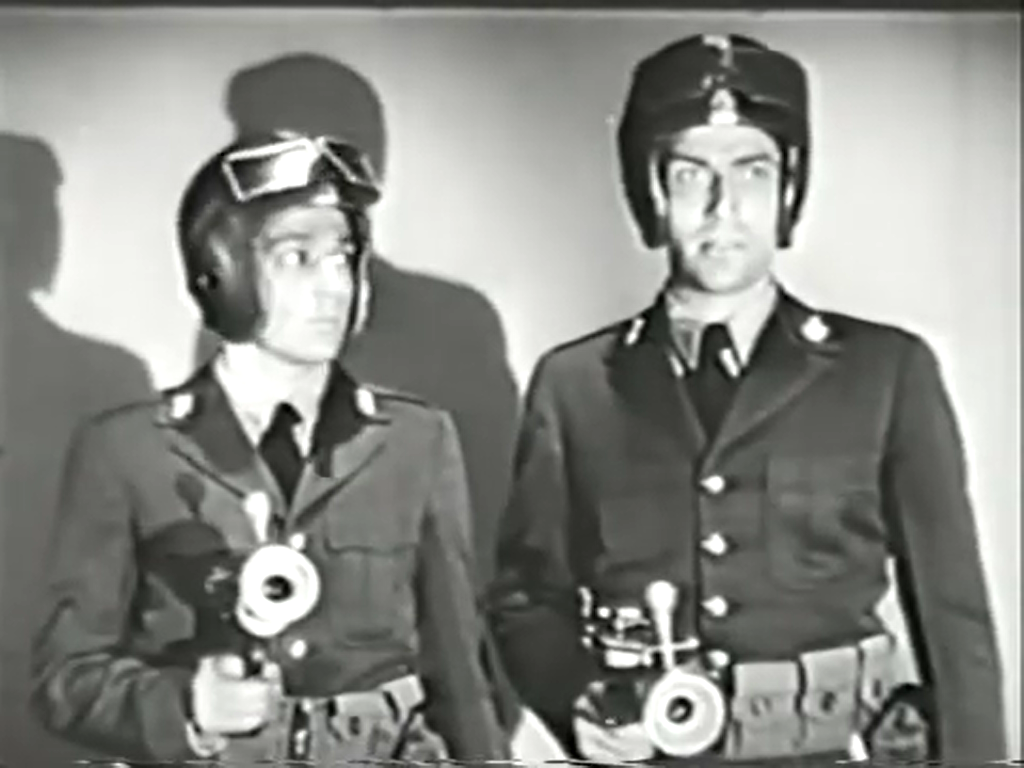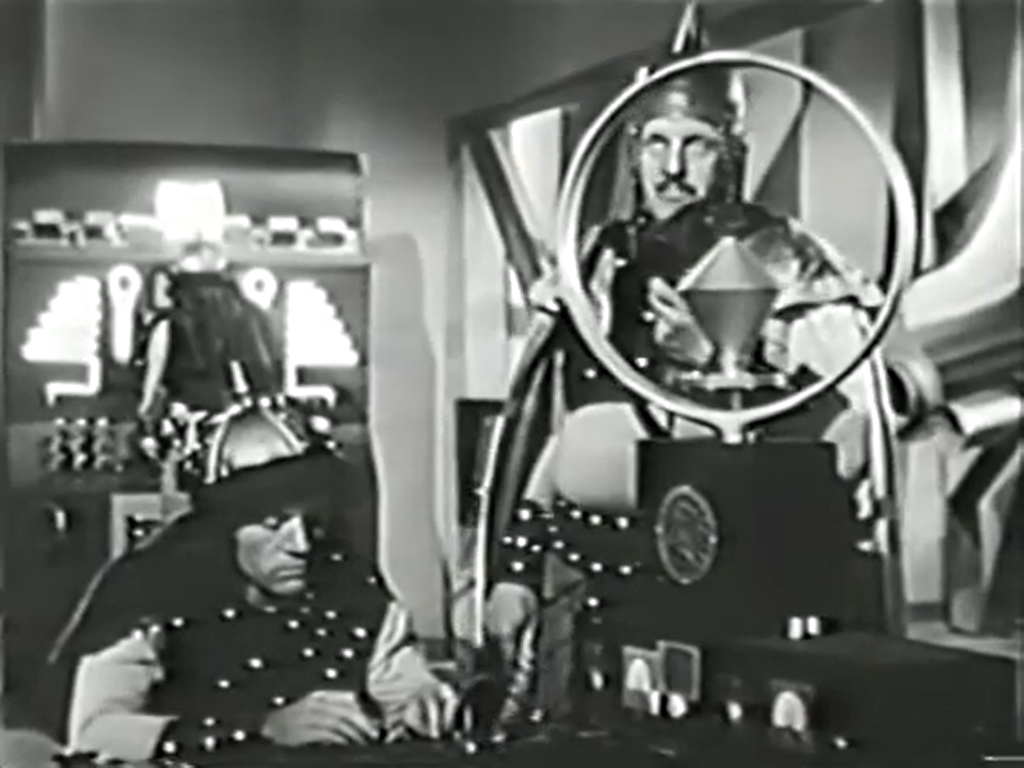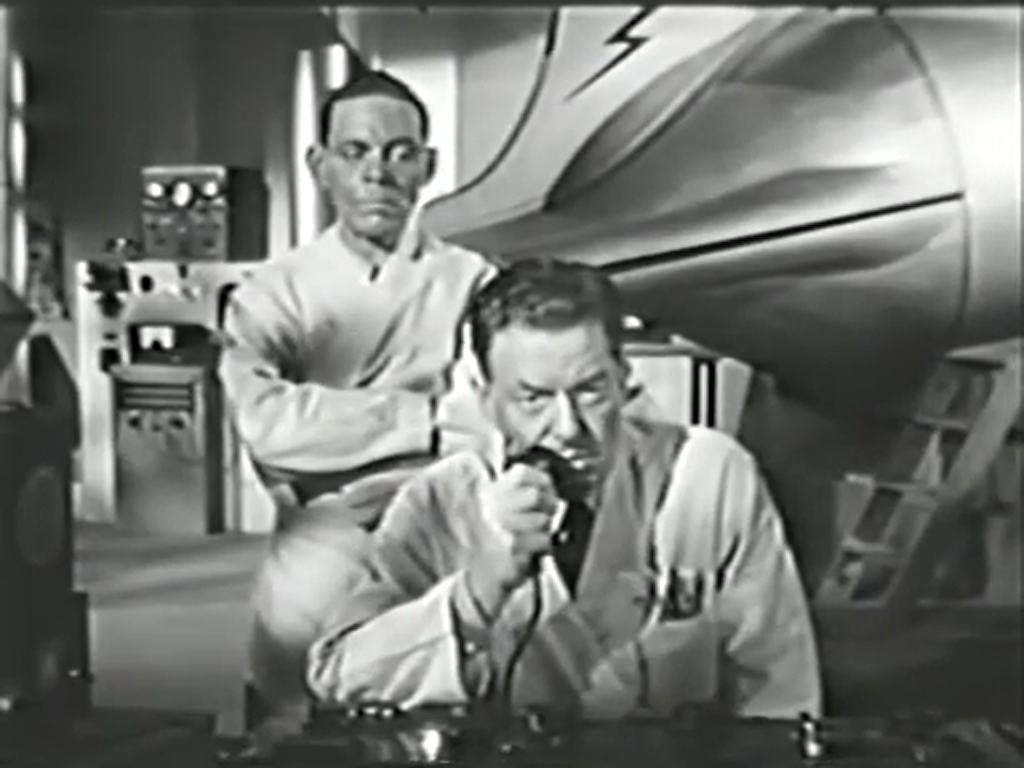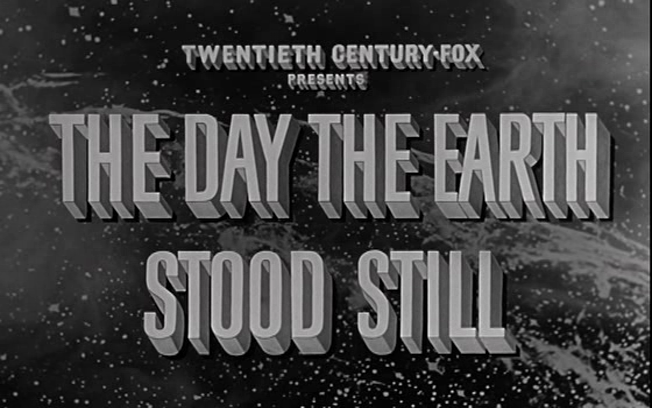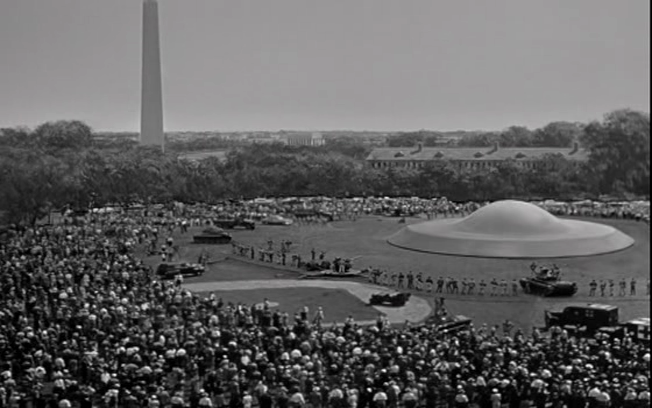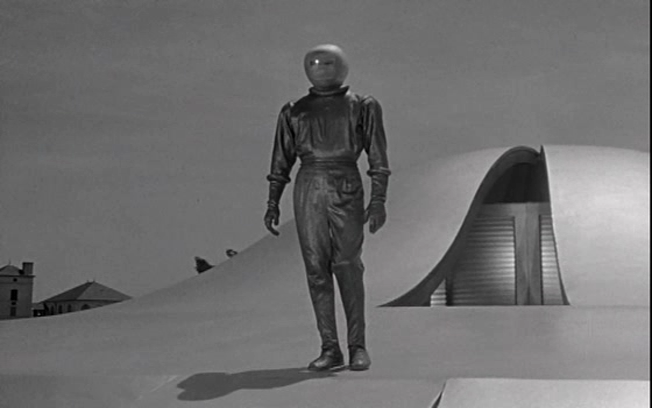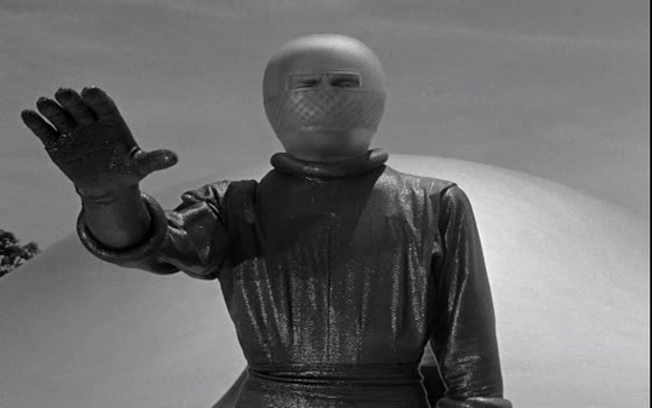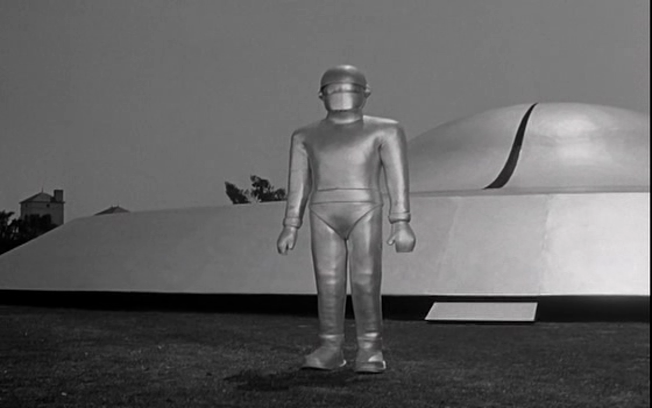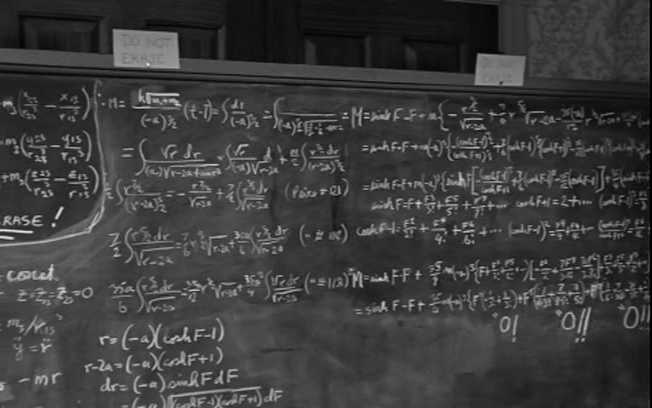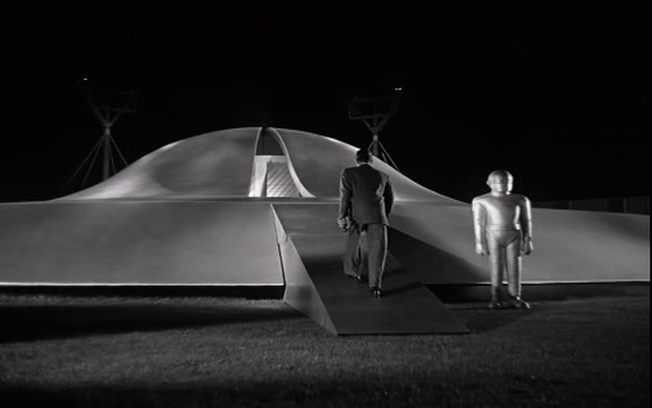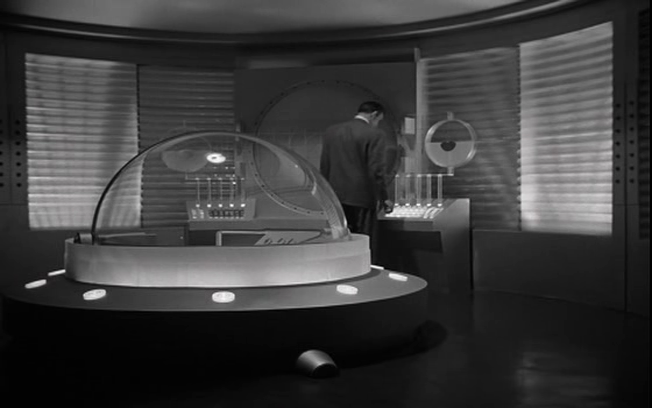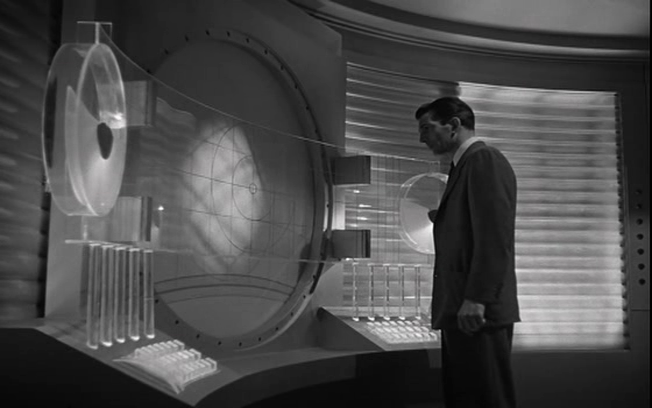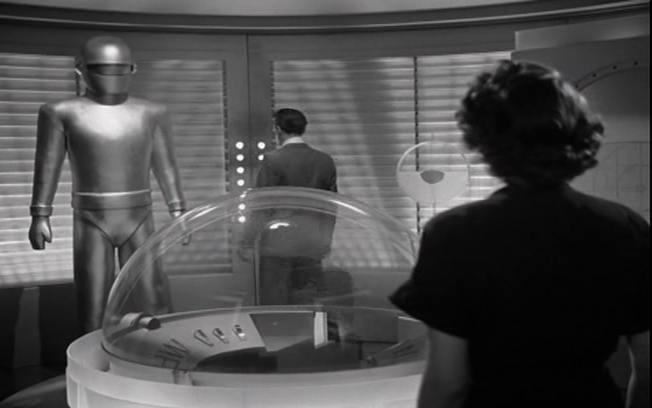-
#462 – Mysterious Island (1951)
Mysterious Island (1951)
Film review #462
Director: Spencer Gordon Bennet
SYNOPSIS: A group of soldiers fighting in the American civil war are captured by Confederate forces. They eventually escape on an observation balloon, but find themselves drifting for days, eventually landing on a desert island far from civilisation. However, the island is far from deserted, as a native tribe, pirates, aliens, a castaway, and a mysterious masked man are all up to various schemes on the island, and the new arrivals must find a way to survive against all these different factions and find a way home…
THOUGHTS/ANALYSIS: Mysterious Island is a 1951 science-fiction serial comprised of fifteen chapters. It is based on the novel of the same name by Jules Verne. The serial is set in the year 1865, during the American civil war, where during the siege of Richmond, Virginia, Captain Cyrus Harding is captured by Confederate forces and taken prisoner. he engineers an escape with some other prisoners by hijacking an observation balloon. Unfortunately, a storm sweeps the balloon way off course, leaving it to drift for many days. When it lands, the crew find themselves on a desert island far from any civilisation, with no way home. They quickly find that the island is far from deserted however, and the new arrivals must contend with multiple factions and their schemes. As mentioned, the serial is based on Jules Verne’s novel of the same name, and incorporates a fair amount of the novel’s structure and characters. This is in contrast to a lot of serial adaptations of comics and books, in which usually only one or two main characters are made to fit into the serial format, omitting a lot of the original’s world and set-ups (such as things that would be too expensive to implement). As such, the serial has a good flow and pacing that keeps things interesting across the fifteen chapters. There’s still plenty of tried serial tropes when characters set up elaborate deaths with plenty of opportunity to escape rather than just killing them, but on the whole there’s plenty going on between all of the different factions to keep things varied and interesting. Even through the fifteen chapters, which is at the longer runtime of these serials, it keeps things consistently entertaining.
Let’s talk about the characters in this serial: there is a very large cast, and multiple different factions that are working against each other. Apart from the main cast that wind up on the island, there’s the native population, a castaway that has gone mad, pirates, aliens from the planet Mercury, and a mysterious masked man. In keeping with the novel, all of these characters are from the source material apart from the aliens from Mercury, which were added for the serial. The serial could have easily got away with not adding them, as there’s plenty of characters and plot anyway, but I suppose they were added to keep up with trends, as sci-fi serials and films started to get more popular after World War II had ended and the subsequent years in which war heroes were the protagonists of choice. The alien characters and plot fit in fairly well and are incorporated into the story so that they don’t stick out as a forced inclusion, which is good. While none of the characters are really unique or memorable, they have a consistency in their acting, and you know who they are and who they’re aligned with when they’re on screen. The heroes are perhaps the least interesting bunch, as they’re all typical young male leads without any special talent or occupation. Nevertheless, you will be on their side as they try and make their way home.
Mysterious Island is a nice surprise in the period of the serial format’s declining popularity. Obviously helped by being based off a famous novel helps give the story an interesting set of characters and set-ups, the serial also incorporates its own elements which, while nothing unique, is integrated nicely with the rest of the source material, even if the sound of pirates, American Civil War, and aliens together sounds like an absurd mix. The acting is decent, the sets convey a consistent sense of location, and the story has a good sense of direction that maintains interest and excitement. Spencer Gordon bennet, the director, was a serial veteran by this point, and delivers his usual developed choreography in fight scenes and keeping the pace of the serial steady yet energetic. Overall, Mysterious Island is a surprisingly decent addition to the serial format, at a time when good examples of it were few and far between.
-
#450 – Government Agents vs. Phantom Legion (1951)
Government Agents vs. Phantom Legion (1951)
Film review #450
Director: Fred C. Brannon
SYNOPSIS: A company carrying materials by truck to be used for military defense are being hijacked in transit by foreign agents. The company is assigned government agents Hal Duncan and Sam Bradley to put a stop to the criminals. Suspecting that one of the managers of the company is actually the ringleader of these hijackings, the agents must work to dismantle the crime ring and unmask the person responsible…
THOUGHTS/ANALYSIS: Government Agents vs. Phantom Legion is a 1951 serial comprised of twelve chapters. The plot is simple enough: a company which transports materials in trucks is being subjected to a number of hijackings. To resolve the situation, government agents Hal Duncan and Sam Bradley are brought in to bring the perpetrators to justice, as their investigation leads them to suspect that one of the four managers themselves is the ringleader of the gang of criminals. If that plot summary doesn’t sound very interesting, that’s because it’s not. There aren’t any real novel, unique or interesting elements to the story that give it anything to stand out. A plot centering on hijacking trucks just doesn’t compare to the fantastic adventures of Flash Gordon, and the characters of Hal Duncan aren’t particularly memorable or recognisable like Dick Tracy. The serial itself unfolds in typical serial format, with the heroes trying to thwart the villain’s various schemes while getting into brawls and gunfights. There really isn’t anything else to say on the story, because it is so devoid of life or interest that it’s difficult to pay attention while watching.
As mentioned, the lead characters are pretty unremarkable: the serial is not based on an existing comic, book or other media, and so there’s no prior name recognition to get people into the theatre, which is going to hinder this serial further when it already has nothing going for it. The lead characters are bland and uninteresting, and don’t have any notable features. They are aided by the company’s secretary, who of course serves as the only female in the cast doing one of only three jobs that women do in these serials (secretary, journalist, or daughter/niece of another character…which isn’t really a job). The four managers of the company, of which one of them is the criminal ringleader, are equally uninteresting, and given that they are all middle-aged white men with the same moustache, there’s really nothing to tel them apart, and it doesn’t really matter which one of them it is. The mysterious villain isn’t even given a name or identity, and is only seen as silhouette from behind. There’s no real attempt to create a compelling villain, and the mystery of the villain is something that has been done by far too many serials to mention.
The serial is packed with the usual cliffhangers, typically resolved by Hal escaping danger by jumping out of the way at the last second before a car goes over the cliff, a building explodes etc. Nothing special to write about there. The serial was released in 1951, way past the peak of the popularity of the serial format, and all of it’s tropes had been done to death. There’s some decent shots, and the action sequences are choreographed fairly well. Fred C. Brannon, the director, directed many serials before this, so he obviously knows what he is doing, but the story and characters are so lifeless, and the stakes centred about a trucking company leads to there being little to invest in. Overall, Government Agents vs. Phantom Legion is not the best example of the serial format, and well past the peak of the format.
-
#379 – Captain Video: Master of the Stratosphere (1951)
Captain Video: Master of the Stratosphere (1951)
Film review #379
Director: Spencer Gordon Bennet, Wallace A. Grissel
SYNOPSIS: The heroic Captain Video and his Video Rangers from across the globe help maintain peace on the planet Earth, but when Earth becomes subject to meteor bombardments from the planet Atoma, Captain Video must find a way to thwart the evil schemes of it’s leader Vultura before it is too late…
THOUGHTS/ANALYSIS: Captain Video: Master of the Stratosphere is a 1951 movie serial. The serial stars (as the title suggests) Captain Video, the leader of an organisation called the Video Rangers, who help protect the Earth. When the Earth becomes subject to meteor bombardments originating from the planet Atoma, Video must stop them before they can invade the Earth. The plot resembles the vast majority of sci-fi serials, which copy the highly successful Flash Gordon and caught the genre in a thinly-veiled repetition of its plot and characters for over twenty years. A lot of the story revolves around Captain Video trying to prove that the scientist Dr. Tobor (yes, that is ‘robot’ spelled backwards) is working with Atoma’s leader Vultura, as Video and Vultura try to outsmart and thwart the other’s plans. I think this format and plot structures were gotten away with for two reasons: one, there was no way to re-watch old serials once they had first aired at the theatre, so new ones could come out with the same story and similar characters; particularly since serials such as this would be aimed at kids, who would not have seen earlier serials. The second reason being that the second world war probably didn’t leave much room or money for the development of anything too original or ambitious, as resources would have been focused elsewhere. Nevertheless, by the time this serial was released in 1951, there probably should have been some effort to change the formula or offer something new.
Despite it’s lack of originality in the story department, there’s still a decent amount of variety going on. The early chapters see Video travelling to the planet Theros, where the peace-loving people are under attack by Vultura’s forces, and Video has to teach them to be guerrilla fighters and fight back. Again, this plot structure shows up in many previous serials. The next major chunk of the serial consists in the back-and-forth between Tobor and Video, as they try and outdo each other on Earth. Video and Vultura only meet in the final half of the last chapter, which feels like a waste. The serial however, does keep things interesting with a whole host of gadgets and inventions that would undoubtedly spark the imaginations of youngsters watching. The guns that the Rangers use that shoot out sparks are quite a nice effect of the time. However, the serial often falls into the trap of explaining what is going on and what all these inventions do rather than actually showing them, mostly due to budget constraints, but often the plot is explained before it happens, leaving little surprise or tension. The inventions too have bizarre technological names, and accompanied techno-babble that try to justify the implausible things they do.
Most of the characters are based off the ones on the TV series, with Captain Video being the typical white American male hero that is the star of all these serials. His younger sidekick is strangely only referred to as “the Ranger” and never given an actual name. This is in keeping with the TV series, but other rangers are shown to use their own names, so it’s odd that he doesn’t. Maybe it’s a way to get kids to imagine themselves in the role of the young teenage sidekick, as anyone could be “The Ranger”. There’s also Ranger Gallagher, who does all the technical stuff at Video headquarters, and Vultura clearly has some east Asian influences in his design, again echoing the “Ming the Merciless” type villain that originated in Flash Gordon. One final note about the characters is that while you will expect these serials to only feature a white cast, there is not a single woman anywhere featured in the serials fifteen chapters. Often there is usually a solitary token female character that sometimes serves as the protagonist’s love interest, but there is none at all here, not even in any of the backgrounds. I suppose the lack of a female character could be attributed to the fact this is geared towards a younger, male, audience, who would not be interested in a female character or a romance sub-plot, but having this cast of inter-changeable white men interact with each other really emphasises the monotony of the story at points.
The serial was directed by Spencer Bennet, a veteran of these kinds of serials, so he had plenty of experience in what to do. Some of the effects are fairly decent; as mentioned, the ray guns the Video Rangers use is pretty cool, and their super-fast car stands out with its unique look. There is also a ‘space platform’ which allows transportation between earth and Atoma, which apparently is millions of miles away. Captain Video also has a rocket ship he travels in, which again adds some variety. Some of the effects (such as the rocket ship in flight) are done through using hand-drawn animation, which allows a lot more freedom in terms of effects, although this is not the first time this was done, having been integrated into the Superman serial a few years earlier. Overall, I think I can place the Captain Video serial just above average in the miasma of similar sci-fi serials: it has a lot of the well-worn tropes and characters, but has some decent effects and various inventions that add a bit of extra spice. It’s obviously meant for a younger audience, but there’s enough content for those who haven’t seen such a serial before to enjoy.
-
#9 – The Day the Earth Stood Still (1951)
The Day The Earth Stood Still (1951)
Film review #9
dir. Robert Wise
Classic sci-fi movie from the 1950’s. The plot is a classic sci-fi trope of the self-destructive nature of man and its far reaching consequences.
When an unidentified object is spotted in Earth’s atmosphere, people around the world rush to identify its origins. Like many movies where first contact is imagined, such as Contact or Close Encounters…people’s reactions to the unknown is one of fear and terror. When the alien lands, it is surrounded by military personnel and tanks. The alien is accompanied by his robot “Gort”, and is then (accidentally) shot, and it turns out he is very much human in appearance. As the movie progresses, the Alien injects his fresh perspective on some of the sights in Washington, and its inhabitants. He says he has a message for the people of the world…and a warning, which must be heard by all of the inhabitants of the planet…
The Day The Earth Stood Still takes a rather simple approach to representing aliens. The alien (Klaatu) is identical to humans in appearance, he even gets a check up in hospital which seems to confirm his physiology is similar to humans as well. Being able to learn our language through broadcasts is a feasible premise, though. It’s easy to look back at movies such as this (which was considered a big budget movie at the time) and criticise the interpretation of aliens and first contact, but they really set the benchmark for films of this kind, and were successful upon their initial release.
As with a number of other sci-fi movies that deal with the whole “first contact” situation, religion surprisingly makes an appearance again. The one line which stands out in this respect is when Klaatu is revived and is asked whether he has power over life and death, he replies: “that power is reserved to the Almighty Spirit.” Strange, ambiguous words from an alien. Apparently, this line was inserted because the MPAA thought Gort’s power over life and death to be too God-like, and an affront to religious beliefs.
What I didn’t pick up throughout the movie (and it seems not many do) is Klaatu’s similarities to Jesus. Arriving from the sky as a messenger…Powers to perform miracles…Even when he pretends to be human he adopts the name “carpenter” (The profession of Joseph, Jesus’s Father). The screenwriter figured these associations would be “subliminal”, but it seems very few people see them the first time watching the movie. Perhaps when you’re watching a sci-fi movie such as this, religious connotations aren’t exactly things you might expect to find…
The maths and science behind the story doesn’t add up in some places (This film was made before the first satellite was launched into space, let alone the first man), but the accuracy isn’t really the point of the movie, it is about the consequences of continued war and aggression on the planet, and how it could easily end in our untimely eradication. A stark message…and warning indeed.
